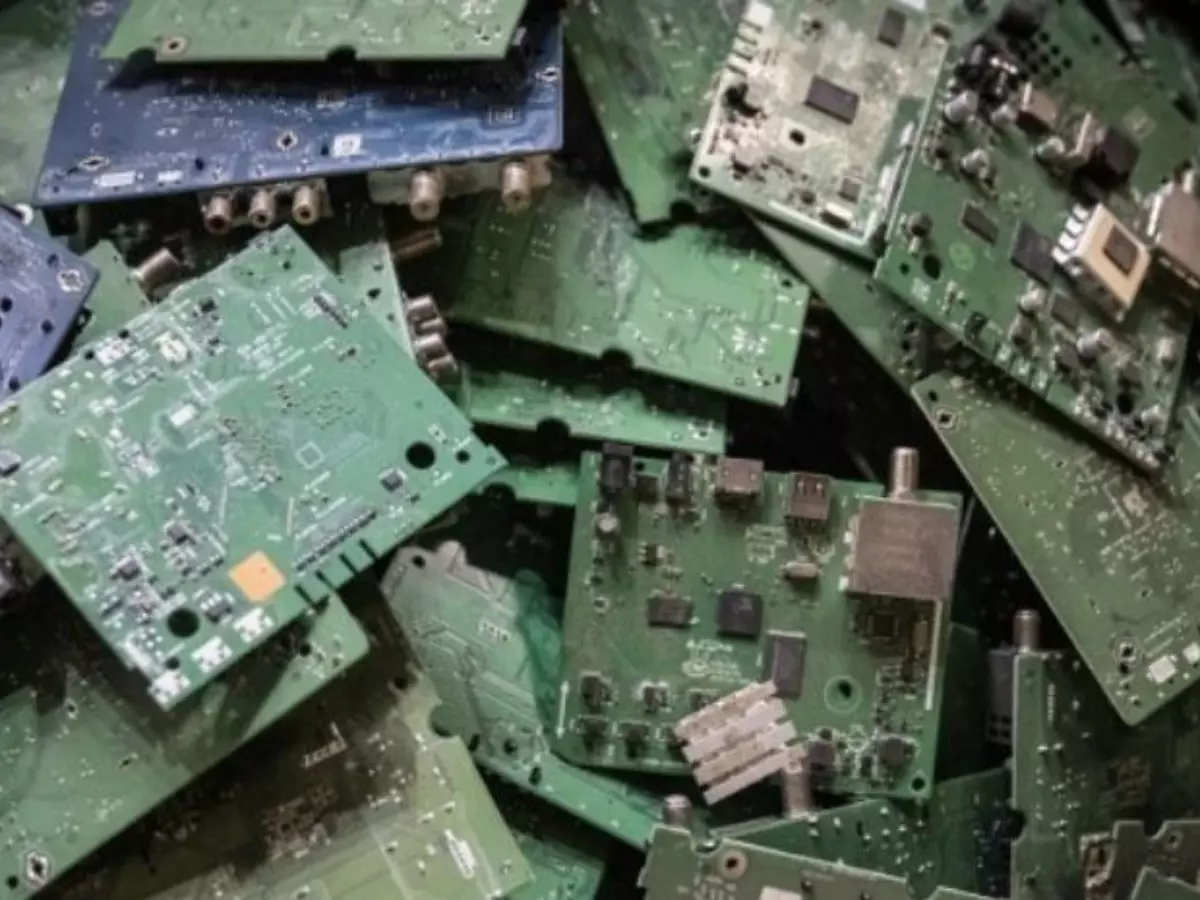Explained: What Is E-Waste And Why India Should Start Taking The Issue Seriously
According to the Global E-Waste Monitor 2017, India generates about 2 million tonnes (MT) of e-waste every year and stands 5th after the US, China, Japan and Germany. In the same year, India treated only 0.036 MT of its total e-waste. A United Nations (UN) report (2019) reveals that the e-waste stream reached 48.5 MT in 2018 and the figure is likely to double if the situation remains the same. Unfortunately, only 20 % of global e-waste is recycl...Read More

According to the Global E-Waste Monitor 2017, India generates about 2 million tonnes (MT) of e-waste every year and stands 5th after the US, China, Japan and Germany. In the same year, India treated only 0.036 MT of its total e-waste.
 AFP/Representational Image
AFP/Representational Image
A United Nations (UN) report (2019) reveals that the e-waste stream reached 48.5 MT in 2018 and the figure is likely to double if the situation remains the same. Unfortunately, only 20 % of global e-waste is recycled.
In India, over 178 registered e-waste recyclers are accredited by the state governments to process e-waste. According to the report of the Union Environment Ministry, many e-waste recyclers in India are not recycling. They are storing it in hazardous conditions and many have no capacity to handle such waste.
What is E-Waste?
 BCCL/Representational Image
BCCL/Representational Image
E-Waste or Electronic-Waste is generated through discarded, old or end-of-life electronic appliances. It involves the parts, spares, components and consumables. It has two broad categories, Consumer electrical and electronics and Information technology and communication equipment.
Simply put, any electronic item that is broken, defective and no longer usable is e-waste. A few examples are computers, televisions, VCRs, stereos, copiers, smartphones etc.
E-waste generation in India
During 2019-20, India generated more than 10 lakh tonnes of e-waste, as per the reports of the Central Pollution Control Board (CPCB). The report also report reveals that only 10% of total e-waste generation is collected in the same year. India generated 708,445-tonne e-waste in 2017-18 which rose to 32% to 1,014,961 tonnes in 2019-20.
 BCCL/Representational Image
BCCL/Representational Image
The figures have taken into account the 21 types of electrical and electronic equipment listed in the E-Waste Management Rules, 2016. These include discarded computer monitors, mobile phones, chargers, motherboards, headphones, television sets etc.
On the contrary, the dismantling capacity of the e-waste has not increased from 7.82 lakh tonnes since 2017-18.
In 2018, the Ministry of Environment informed that 95% of e-waste in India is recycled by the informal sector and scrap dealers unscientifically dispose of it by burning or dissolving it in acids.
How does e-waste impact the environment?
Improper e-waste disposal adversely impacts the environment and eventually human health. It causes air pollution due to informal disposable by disassembling, shredding, or melting (to obtain a metal such as copper). The burning releases harmful toxins and hazardous fumes which can travel hundreds of kilometres and pollute the atmosphere.
 BCCL/Representational Image
BCCL/Representational Image
The e-waste contaminates the land and underground water when informally disposed in the public land. It affects the crop as it becomes sensitive to absorbing the toxins, resulting in illnesses and a deterioration in soil quality.
Mercury, lithium, lead, and barium, among other elements, are commonly found in e-waste and they can very well contaminate water and harm aquatic animals, plants, humans, and other living things.
What are E-Waste Management Rules, 2016?
India has E-Waste Management Rules, 2016 to fight the issue. The rules are supersession of the E-waste (Management & Handling) Rules, 2011. Under the rules, there are over 21 products including Compact Fluorescent Lamp (CFL) and other mercury-containing lamps.
It brought the producers under Extended Producer Responsibility (EPR) and made them responsible for the collection of E-waste and for its exchange.
The Deposit Refund Scheme was also introduced to tackle the issue, under which an additional economic instrument wherein ¡°the producer charges an additional amount as a deposit at the time of sale of the electrical and electronic equipment and returns it to the consumer along with interest when the end-of-life electrical and electronic equipment is returned.¡±
 BCCL/Representational Image
BCCL/Representational Image
The role of State Governments has been also focused on ensuring the safety and health of the workers involved in dismantling and recycling operations. A violation of rules would also lead to a penalty.
Urban Local Bodies are also included in the rules as they are given the duty to collect and channel the products to authorized dismantlers or recyclers. Further, they are also assigned to allocate space to existing and upcoming industrial units for e-waste dismantling and recycling.
Inputs from down to earth, Indian Express and The Hindu
